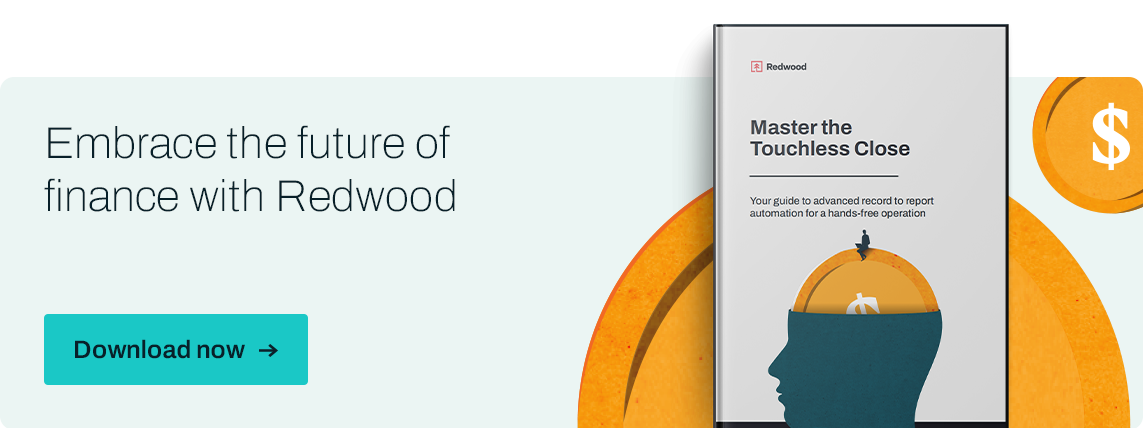The touchless close: Transforming month-end stress into strategic success

The end of each month traditionally brings a flurry of activities to finance functions, with finance teams immersed in closing the books. This period is often characterized by long hours, meticulous data reconciliation and a frenzied rush to meet deadlines. However, with advancements in automation technology, this scenario is rapidly evolving. The concept of finance automation and the “touchless close,” a term coined by analyst firm Gartner during the pandemic, is emerging as a transformative force amongst innovative record-to-report (R2R) initiatives, offering a stress-free, efficient and strategic approach to financial close processes.
Unveiling the power of automation in R2R
At the heart of the touchless close is the strategic application of automation to handle the majority of R2R processes, including those that reside outside of ERP systems like SAP. Automation enables activities such as reconciliations, error detection, error correction and other internal controls to be performed throughout the month, even daily, eliminating peak month-end workloads. By automating critical financial tasks, stakeholders can significantly streamline their month-end close, enhancing both efficiency and accuracy:
- Journal entries made effortless: Automation revolutionizes journal entry processing by automating data collection, financial calculations, validations, approvals, audit trails and posting to finance systems. This not only saves time and manual effort but also drastically reduces human error, enhancing the overall integrity of financial records.
- Seamless reconciliation processes: Automated account reconciliation tools are capable of handling even the most intricate account, intercompany and other reconciliations with precision, significantly cutting down the time and effort traditionally required for manual reconciliations. Daily reconciliations, made possible by automation, can significantly simplify the month-end close.
- Efficient error detection and correction: Automation tools excel in identifying and rectifying errors, optimizing both the detection and adjustment process. Error detection and correction processes can be automated continuously throughout the month to enable issues to be resolved quickly. This capability is crucial for maintaining the accuracy of financial statements and ensuring compliance.
- Simplifying complex accruals and adjustments: Accruals, provisions and reclassifications, which are typically complex and prone to human error, are seamlessly managed by automated systems, ensuring consistency and reducing the likelihood of errors. Automation can identify, calculate and post accruals and adjustments, removing the need for key finance staff to manage this critical activity.
- Automating asset accounting: Dealing with asset acquisitions, disposals, transfers, revaluation and depreciation becomes significantly simpler with automation, particularly for organizations managing a large portfolio of assets across multiple locations and companies.
- Dynamic close checklist management: Automation extends to close checklist management, transforming it from a mere tracking tool to an active participant in the close process, ensuring tasks are executed in the right sequence based on critical dependencies, resulting in a timely, efficient and error-free close.
- Advanced reporting and data analysis: Automated systems not only collect, validate, adjust and consolidate financial data but also provide deep insights through advanced analytics, leading to more informed decision-making and strategic financial reporting.
From stress to strategic insight
The move to a touchless close transforms not just the close process but the entire ethos of the finance department. The end of the month transitions from a pressure cooker of stress to a period of strategic review and insight:
- Continuous improvement and predictability: The predictability brought about by automation paves the way for continuous business improvement. Finance teams can shift their focus from data compilation to analyzing trends and providing strategic insights.
- Reallocation of valuable resources: Freed from manual tasks, finance professionals can focus their expertise on higher-value activities like strategic planning, forecasting and financial decision-making.
- Enhanced compliance and control: Automated processes ensure financial compliance and provide greater control over financial data, reducing risks and improving audit preparedness.
- Reduced time to value: The touchless close reduces the time required to close the books, providing trusted information and meaningful insights to the management team faster than ever, enabling a more dynamic response to business opportunities
Embracing a new era in finance
The concept of a touchless close is rapidly becoming more than just an innovative idea; it’s a practical reality for forward-thinking CFOs and finance leaders. This shift represents a significant advancement in financial operations, transforming day-to-day finance operations and the end of each month from a source of anxiety to an opportunity for strategic growth and insight.

The future of finance lies in embracing automation, and the touchless close is at the forefront of this transformation. It’s a journey towards a more efficient, strategic and stress-free financial function, where month-end closes are no longer a frenzied rush but a seamless, insightful process.
The touchless close isn’t just about doing things faster; it’s about doing them smarter, unlocking the true potential of finance teams in the modern business landscape. To learn more about the touchless close, download the whitepaper: “Master the touchless close” here.
Sign up for a demo of Redwood’s record-to-report automation here.
About The Author

Shak Akhtar
Shak Akhtar, General Manager of Finance Automation at Redwood Software, possesses extensive experience in finance and IT. With an accounting background with IBM and roles at SAP®, BEA and Wolters Kluwer/Tagetik, he brings a wealth of hands-on knowledge as he leads global initiatives in finance automation and record-to-report (R2R), facilitating client-led financial transformation.